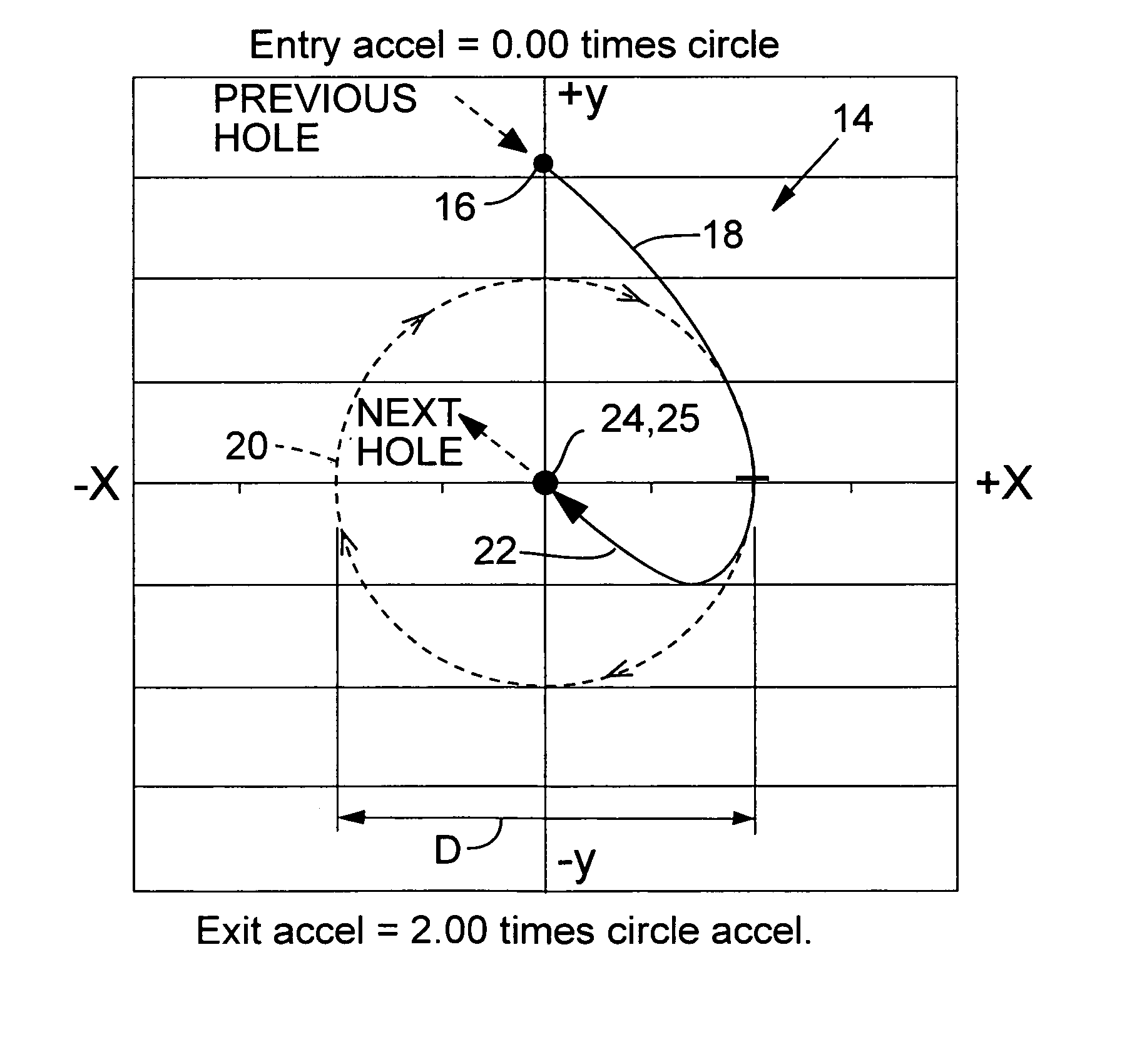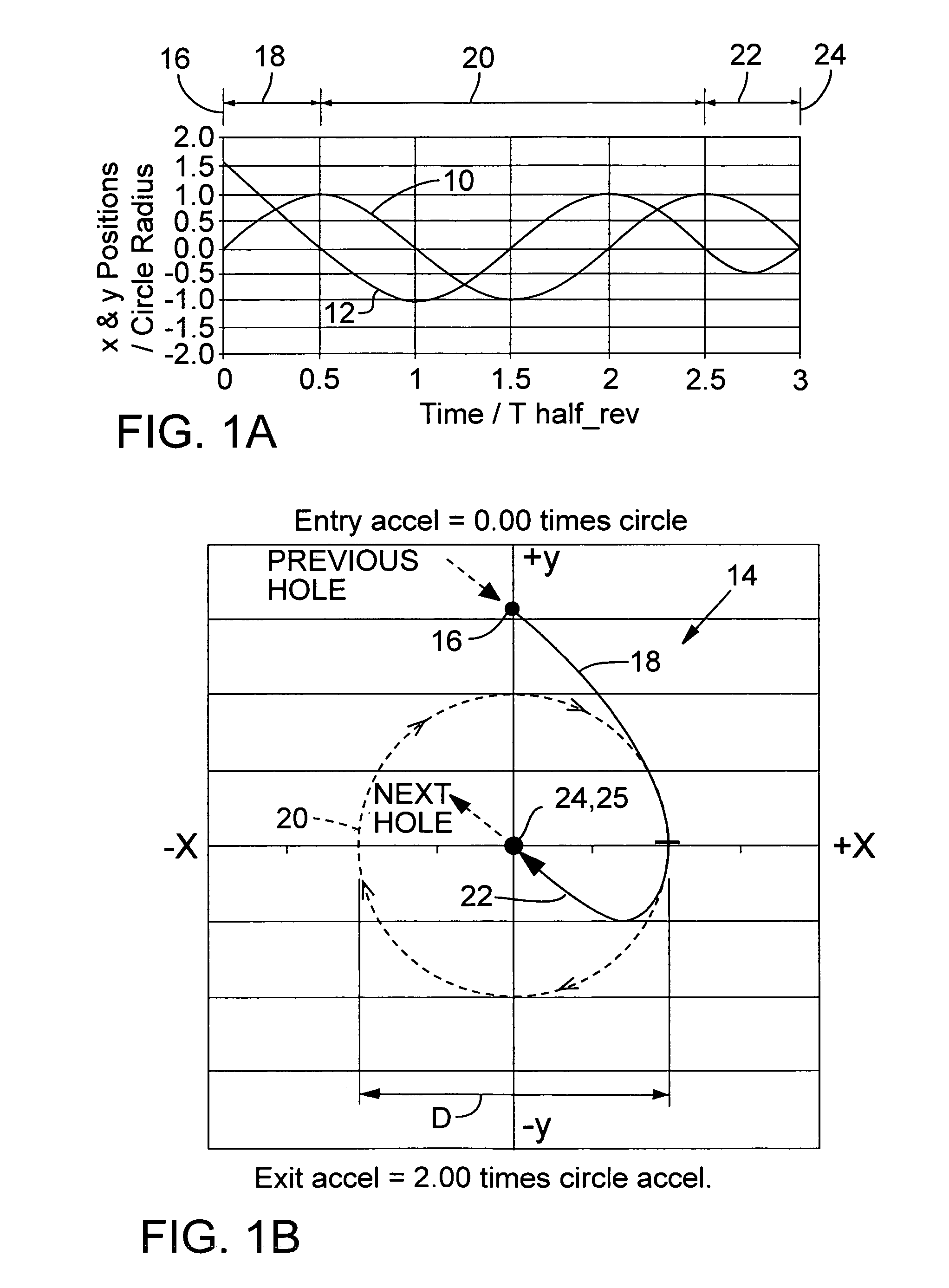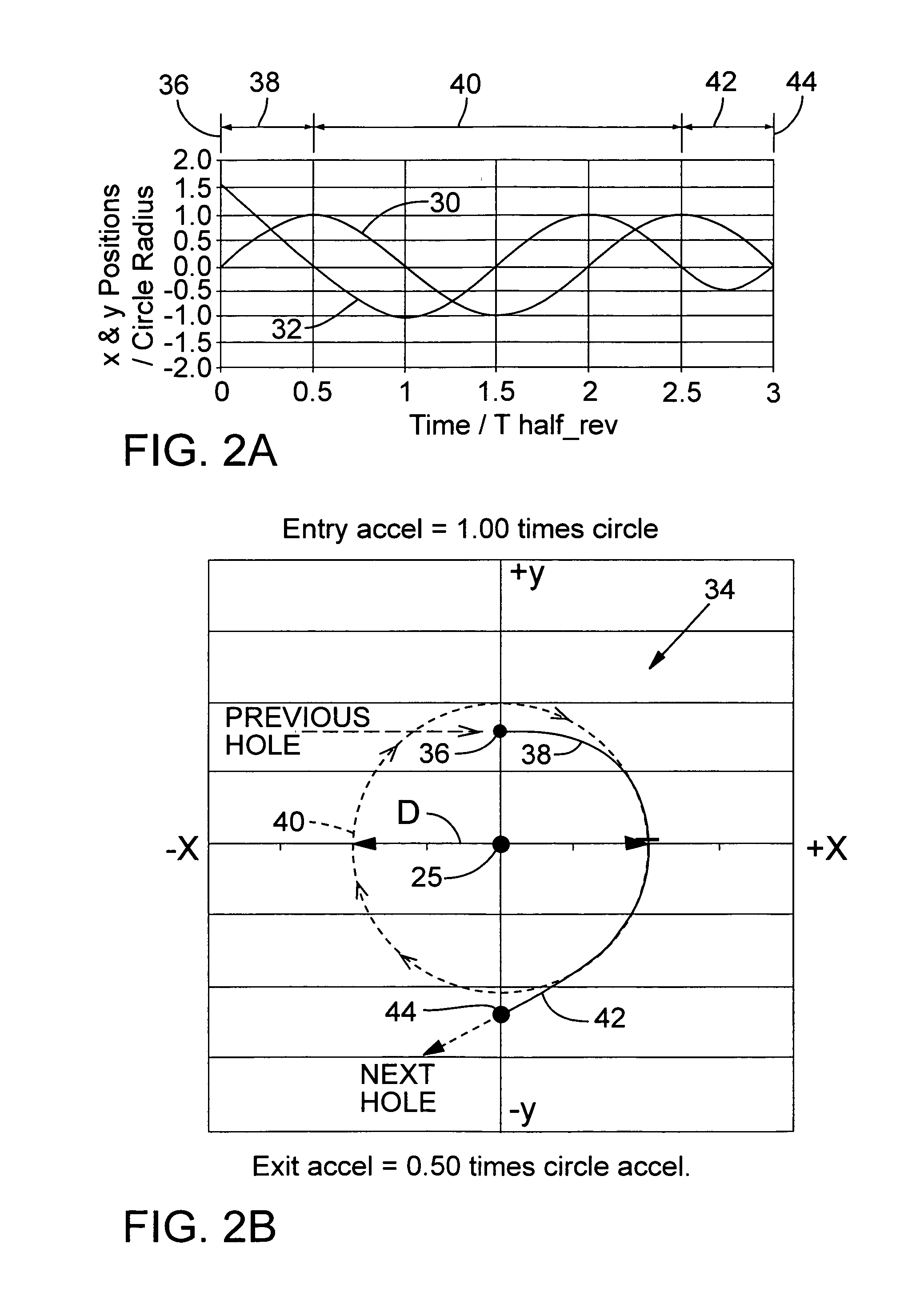Methods for processing holes by moving precisely timed laser pulses in circular and spiral trajectories
a laser pulse and circular and spiral technology, applied in the field of lasers, can solve the problems of limited drilling, slow mechanical drilling methods, and prone to tool breakag
- Summary
- Abstract
- Description
- Claims
- Application Information
AI Technical Summary
Benefits of technology
Problems solved by technology
Method used
Image
Examples
Embodiment Construction
[0053]As mentioned in the background information section, to achieve high-speed, accurate positioning of a laser beam, positioner systems must control jerk, which is the rate of change of acceleration. Many prior positioner systems effected circular motion with a string of short interconnected linear moves. However, the sudden angular change at each interconnection produced unacceptably large jerks that limited speed and positioning accuracy.
[0054]Circular motion is fundamental in hole drilling applications, so employing sinusoidal positioner driving waveforms is preferred. In particular, preferred positioner driving waveforms employ half-sine-shaped acceleration segments that start and stop at a zero acceleration point. Each acceleration segment has a period TMIN that is the shortest non-zero acceleration half-sine segment within the acceleration capability of the positioner system and avoids positioner resonance problems.
[0055]As shown in FIGS. 1A and 2A, circular motion is achiev...
PUM
| Property | Measurement | Unit |
|---|---|---|
| distance | aaaaa | aaaaa |
| diameter | aaaaa | aaaaa |
| diameter | aaaaa | aaaaa |
Abstract
Description
Claims
Application Information
 Login to View More
Login to View More - R&D
- Intellectual Property
- Life Sciences
- Materials
- Tech Scout
- Unparalleled Data Quality
- Higher Quality Content
- 60% Fewer Hallucinations
Browse by: Latest US Patents, China's latest patents, Technical Efficacy Thesaurus, Application Domain, Technology Topic, Popular Technical Reports.
© 2025 PatSnap. All rights reserved.Legal|Privacy policy|Modern Slavery Act Transparency Statement|Sitemap|About US| Contact US: help@patsnap.com



